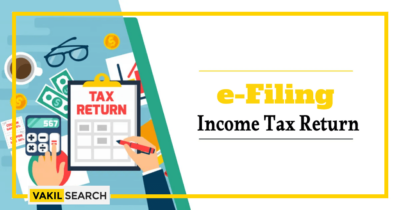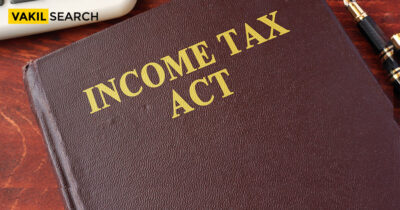Capital gains are broadly classified into two major types. In this blog, let's look into the following types of categories and how the taxes are calculated on them.
What Is a Capital Gain?
Any asset you own is considered to be ‘capital.’ So when you sell an asset for a price higher than the value at which you bought it, it is considered an income and is liable to income tax. This is called a ‘capital gain’. But unlike regular income, the exchange in ownership of an asset is considered to be a slightly more significant event as far as the tax authorities are concerned, and hence when calculating the Tax on Income liability on any capital gains, there is deeper scrutiny into the nature of the transaction. The result of this scrutiny is what determines the different types of capital gains tax and the taxes applicable to the said capital gains tax.
Short-Term Capital Gains Tax
As the name suggests, these are gains made upon the sale of what is called a ‘short-term asset.’ A short-term asset is an asset that has been acquired with the intent to sell it off after an increase or appreciation in its value. But the definition of ‘short term is different for different assets as far as tax practices are concerned. Two factors come into play here. First, is the nature of the asset. And second, is the period for which the asset was held by the owner of the asset before selling it.
Equity-based assets such as stocks and shares are considered short-term assets if they are held for a period of less than one year. And any gains made from the sale of such assets would be liable to what is called a short-term capital gains tax or STGC tax. The rate of tax for such gains is a flat 15%, plus any applicable cess in that assessment year. This tax rate is not subject to a slab rate like how other sources of income are dependent on the value of the income. However, if you have incurred any expenses on the purchase or sale of these assets, such as brokerage or stamp duty, you can claim deductions against the capital gains, thereby reducing your tax burden as such.
Debt-based assets, such as debentures, that are held for a period of three years or less are considered short-term capital assets and are liable to STGC. The tax calculation however is slightly different as far as these assets are concerned. Income from the sale of debt-based assets is considered as regular income and hence is taxed in accordance with the slab rate applicable on income tax in that particular assessment year. So the selling price minus the buying price minus any additional expenses incurred to make the purchase gives you the short-term capital gain on the sale of the asset. This is then added to the income from other sources and tax is calculated based on the slab rate prescribed by the budget in that tax assessment year.
Any gains made on the sale of movable property, for example, gold and jewelry, which tend to appreciate in value over time, are liable to short-term capital gains tax if the asset was sold by the owner within three years of having bought it. These capital gains also, like debt-oriented assets, are liable to slab-based taxation. If any expenses have been incurred on making any improvements to the asset to enhance its value, for instance, designing expenses of converting gold into jewelry, then they can be added to the buying cost, hence enhancing it and allowing for a larger deduction from the selling price, reducing the overall tax liability.
Empower your business with expert precision – our top-tier bookkeeping service for a seamless financial journey!
Immovable property, such as land or building, qualifies as short-term capital if it is sold within two years of having been purchased. Except for this difference in a shorter holding period, the calculation of taxes on any short-term capital gains on the sale of immovable property is exactly the same as movable property. Any improvements made to the property that enhances its value can be added to the buying cost to allow for a larger deduction from the selling price to reduce the overall capital gains tax liability. If the land has been bought, then the cost of registration on purchase can be added to the buying cost. If any construction has been done on the land, then the cost of construction can be added to the buying cost after taking depreciation into consideration. Like movable property, the capital gain calculated is then added to income from other sources and taxed as per the applicable slab rate prescribed in the budget of the assessment year the sale is made.
Long-Term Capital Gains Tax
The obvious other category in the spectrum of capital gains tax is long-term capital gains tax or LTCG tax: Any capital gain that is not short-term as stipulated above becomes long-term capital gain automatically for the purpose of taxation.
Capital gains on the sale of equity assets, like shares and stocks, are considered long-term capital gains if they are sold after more than a year from the date of purchase. The principle of adding any expenses incurred on the purchase or sale of the asset, such as stamp duty or stockbroking, is available even for the purpose of calculating the tax on long-term capital gains. Capital gains from the sale of equity-based assets were exempt from capital gains tax until the year 2018-19 when the policy was changed and income from this source was also brought under the ambit of an income tax return. Long-term capital gains on shares are exempt up to ₹1 Lakh after which they are taxed at a flat rate of 10%.
Stay in control of your taxes – our Tax Calculator India ensures accurate projections.
When it comes to long-term capital gains on any other kind of asset, an additional notion comes into play. This is a concept called ‘indexation’. Indexation basically is a calculation that is made for the purpose of taking inflation into consideration while deducting the buying cost from the selling cost to arrive at the capital gain. The fact that the longer amount of holding period of an asset is the differentiating factor between long-term and short-term capital gains requires inflation to be taken into consideration for the assessment of the cost of acquisition on the date of the sale. This becomes so much more important when capital assets like land and property are sold after a considerable period, many times decades after the property was originally purchased. Something that is bought under a different economic atmosphere has to be given the benefit of inflation to adjust the original cost of acquisition had it been bought in the year in which it is being sold.
For the purpose of indexation, we refer to what is known as ‘the cost of inflation index’ which is a calculation that the income tax authority publishes every year for the additional inflation in the cost of living in the economy. The CII value of the year of sale is divided by the CII value of the year of purchase. This value is then multiplied by the original buying price of the asset to arrive at its inflated value in the year of sale. This value is then subtracted from the selling price to arrive at the long-term capital gain. This capital gain is taxed at 20% of the indexed value, plus any cess that is applicable in the assessment year the capital gain has been made.
Conclusion
While in very broad terms it can be said that there are just two kinds of capital gains taxes, in truth different assets are treated differently when it comes to tax assessment. You have to look into the nature of the asset and the number of years you have held the asset before selling it off. If you have sold or are planning to sell any of your capital assets, contact our experts at Vakilsearch to help you make a more informed decision about structuring your capital gains tax liability.
Read more










